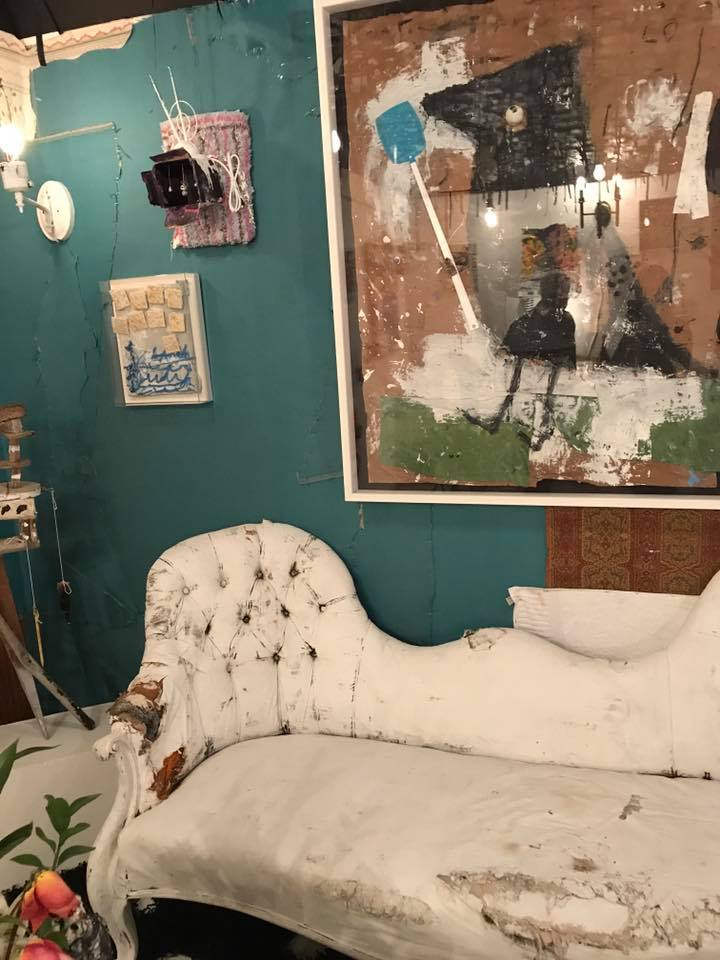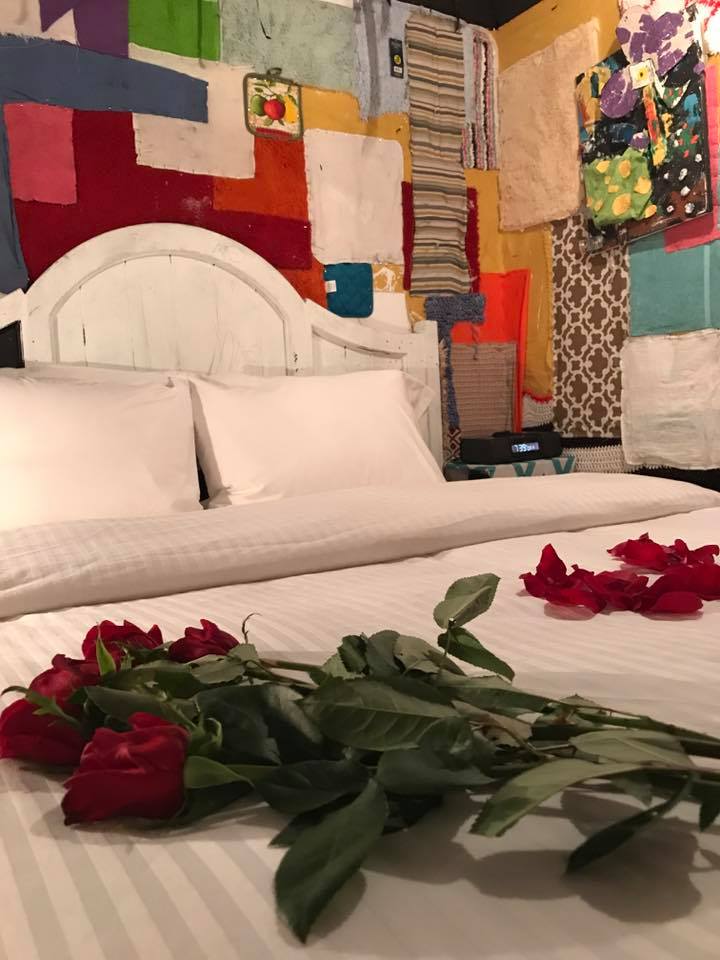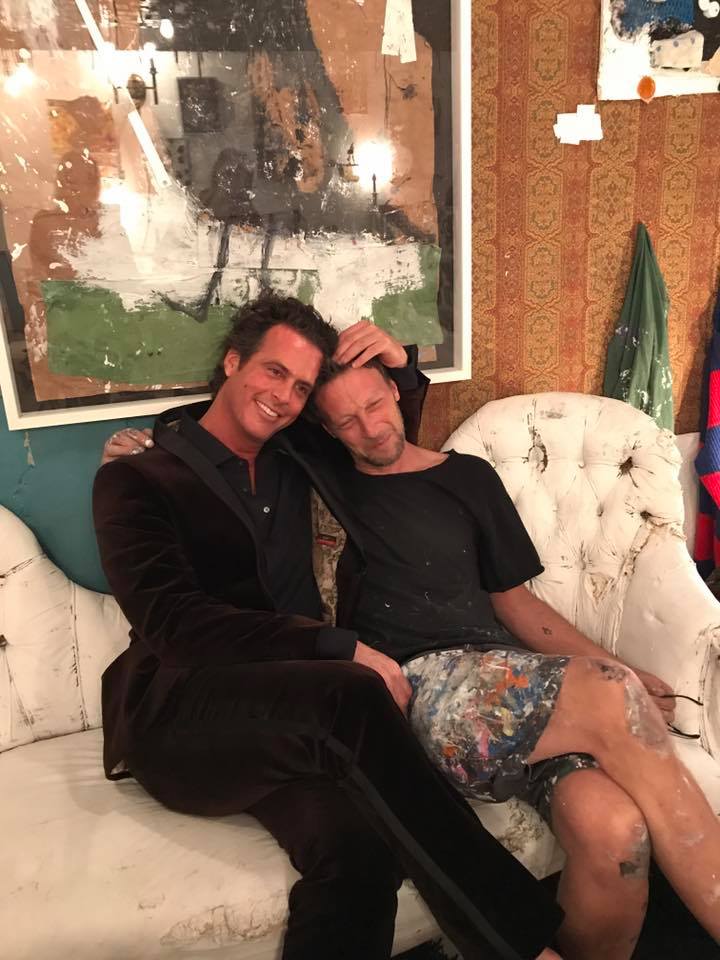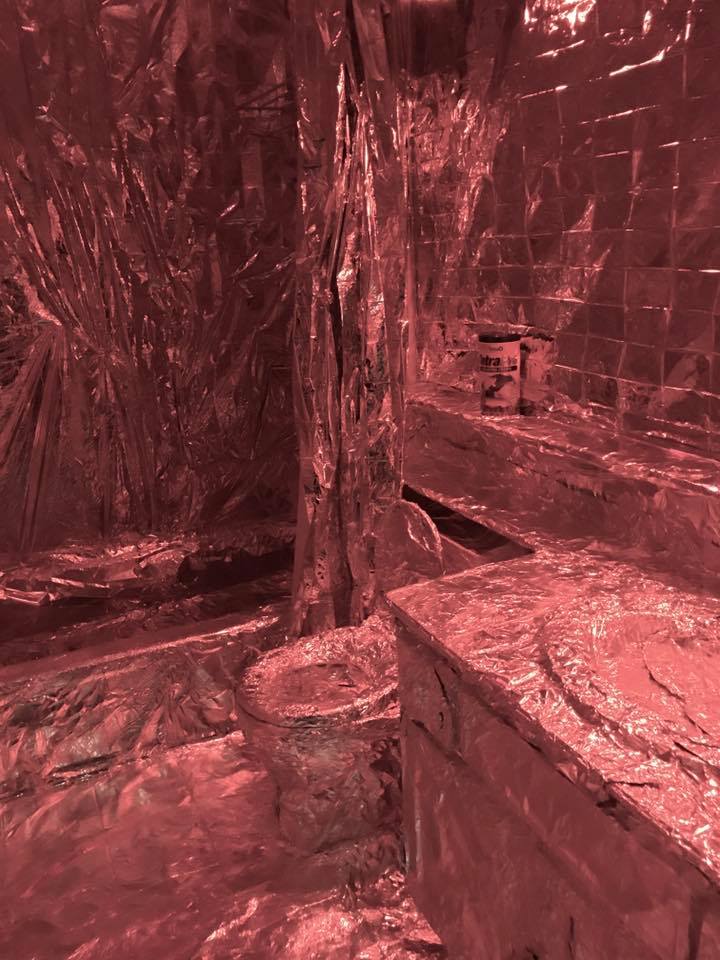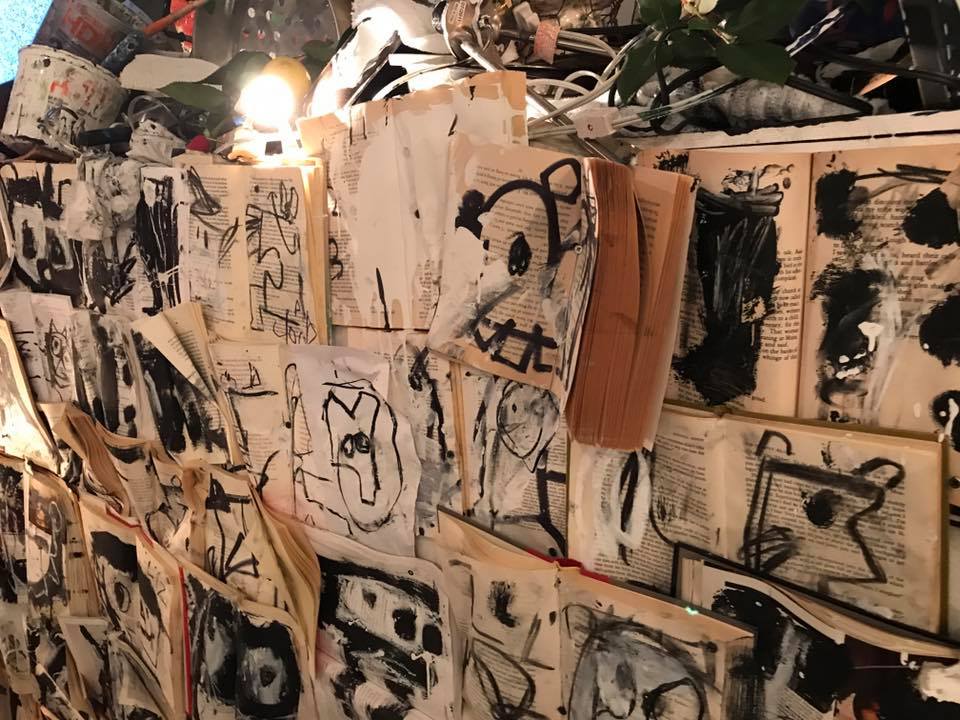It’s a long way from Bombay Beach, Calif., on the shores of the Salton Sea, to West Hollywood, and a suite at the Petit Ermitage Hotel. But underground New York based artist Greg Haberny has made that journey. He’s exhibited at The Hermitage Museum in Bombay Beach for the last two years as part of the Bombay Beach Biennale, an immersive art experience founded by experiential artist and Petit Ermitage Hotel co-owner Stefan Ashkenazy along with Tao Ruspoli, and Lily Johnson White.
Get a look at Haberny’s Salton Sea art and his singular, renegade vision in Suite 406 at the WeHo hotel — to paraphrase the lyrics of that iconic Eagles’ song about another hotel in California, you can check it out any time you like (now through March 10th) but you may not want to leave.
Haberny, who had just finished creating the Petit Ermitage suite installation moments before our look at its opening on February 17th, explains how he got involved in the project.
“I’d worked on Banksy’s Dismaland, and burned my part in it to ashes. Stefan saw and was impressed with my work, so he spoke to me about the Bombay Beach project. He really gives artists a voice in a real radical forefront,” Haberny says. “I’m eternally grateful as an artist from New York City to be brought into the desert, something I’d never experienced.”
The on-going Bombay Beach installation was developed by Ashkenazy in a way that Haberny says was designed “not to change the aesthetic of the community…to keep the town in a raw aesthetic but raise attention to the Salton Sea, and take an approach similar to that in Marfa, Texas.”
For the uninitiated, in the 1970s, minimalist artist Donald Judd moved to Marfa and created giant works of art that became an integral part of the desert landscape, and led that lonely town to become an art tourism mecca, with minimal commercialization.
“The project in Bombay Beach is highly euphoric, and very supportive to the needs of the area,” Haberny says, noting that the region around the sea is already home to the art community of East Jesus in nearby Slab City, and the folk art masterpiece of Salvation Mountain. Not too far away, near Joshua Tree National Park, the work of Noah Purifoy has transformed an outdoor space into a found-art gallery of epic proportions.
The museum show in Bombay Beach is entirely donated to the town itself; it’s a non-profit space in which the art is not sold, but rather belongs to the community. But Haberny’s West Hollywood installation is something different.
“Why I’m here is to raise attention for the Bombay Beach project. I’m selling the pieces here in LA to raise money to bring out other artists to the Salton Sea for the same experience I had.”
Describing his experience, in which he often spent 3 to 7 weeks or more at a time living in Bombay Beach, Haberny says “It’s a radical thing going on in the field of emerging art, creating outside a gallery setting allows you to do what you want to do. This has opened my mind.”
Ashkenazy says both the Bombay Beach Biennale and Suite 406 came about through his hotel. “My brother and I bought the building in 2004, and in 2008 we decided to make the space into a gypsy encampment, a caravan. We did Burning Man, and that was also an inspiration.” According to Ashkenazy, “I was sitting with some people explaining the gypsy concept, which I wanted to bring to the desert during Coachella, but not do something affiliated with it. And as I mentioned my plans, my girlfriend at the time talked about a zombie movie she’d written set in Bombay Beach; another friend had filmed there, and another had a house there. So we decided to focus on that town.” He notes “We went in November 2014, and we launched year 0 of our art and music experience by 2016.”
Ashkenazy knew Bombay Beach was the right place for his event “the moment I sent foot there. The idea came to me to convert it, using it as a canvas, and turning the town into an immersive installation of Gonzo art.”
His first move was to buy a house there and allow an artist to work with the space. “I discovered Greg through a mutual friend in the Dismaland project. I immediately decided on him, and I handed him the keys to the dumpiest house in shambles. Based off the style of Greg’s work, I thought he might drive a car into it and burn it, but he said he wanted to turn it into a gallery, a museum.”
Haberny initially lived in the town for 7 weeks and scavenged materials from the area. When the literal art house was complete, it was donated to the town.
“Together with the local residents we have managed to activate half of the town and have a community of friends,” Ashkenazy relates.
He adds that the first year of the Biennale, Haberny worked alone, worked with two other artists the second year, and for this year, he will be redeveloping additional space, converting a garage as an annex for an additional wing of the Hermitage Museum. With him will be artist Jon Pylypchuk.
Above, Haberny in Suite 406.
Along with the museum space, artists who come to Bombay Beach now have opportunities to become home owners. An ersatz drive-in featuring abandoned cars is one installation among many in town; the so-called Windmill House featuring suspended objects of furniture is another.
Co-founder Lily Johnson White invited filmmaker DeNike Jen to make a film in the windmill house, called Queen of Narwals, it’s a film about a gang of girls in a post-apocalyptic landscape. The surrealistic short work is currently screening at Anat Egbi gallery in Culver City.
Ashkenazy with Haberny, above.
Ashkenazy laughs at his own awesome folly. “Owning so much of Bombay Beach, it’s an exercise in mind-numbing idiocy. It’s like having fantastic, really expensive canvasses. I can’t imagine a higher form of art than space we want people to be living and sleeping in.”
With that goal in mind, the Petit Hermitage is also offering Suite 406 as a room to sleep in. “It’s not like passing through a museum. You can climb in the bed here and develop a relationship with the works.”
The works are varied and fantastic. The bathroom is covered in aluminum foil, and gold fish swim in the tub, sink, and toilet.
Haberny’s upcycled works – previously unwanted materials reformulated as painting, pottery, and sculpture – includes unspooled VHS cassettes on the suite’s ceiling and a sculpture that resembles a melting rabbit. He’s mixed new work created through the Petit’s Artist In Residence program with pieces from the Bombay Beach Hermitage Museum.
“Bombay Beach is really an incubator of ideas for artists,” Ashkenazy says, as he continues his family’s legacy of supporting important contemporary artists such as Miro and Basquiat.
Get a look at the art of Bombay Beach in a suite that’s eclectic and surreal, from its handmade fabric wall to paintings on paper bags, a television that screens snowy interference, and a library of books tacked to the wall, covered with mysterious, alien, black and white images. The suite offers a kaleidoscopic look at the art of the Bombay Beach Biennale, and an inclusive look at Haberny’s work.
Just as the spirit of Bombay Beach challenges the idea of what a Biennale can or will be, so a visit to, or a stay at Suite 406 will challenge preconceptions as to just what kind of a “trip” a hotel experience can provide.
To reserve a night or book a visit to Suite 406 through March 10th, contact:
Genie Davis; photos: Genie Davis







